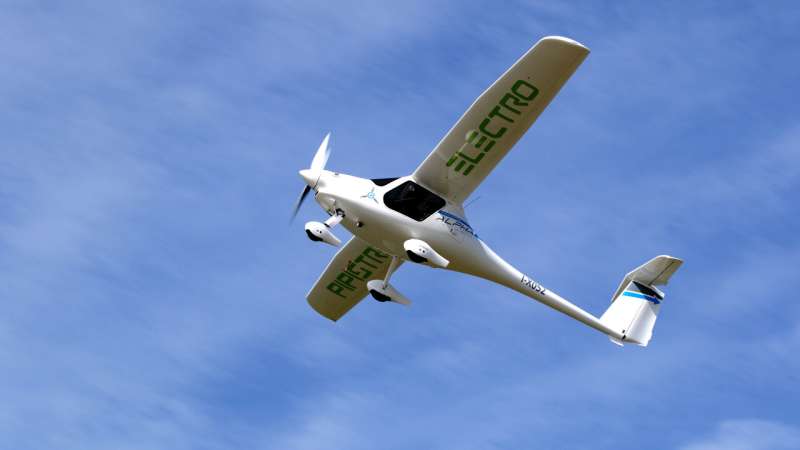
Aviation has grown considerably in recent decades and accounts for approximately 2% of global carbon dioxide emissions and some 4% of all climate change impacts annually. While aviation is an important contributor to climate change and other environmental problems, electrification is one option for reducing these environmental impacts.
The first electric aircraft are already in operation today and are mainly small planes used for pilot training and short flights in the immediate area. This is the type of plane that was studied in the life cycle assessment. The research is presented in the paper, "Life cycle assessment of two-seater all-electric aircraft," published in The International Journal of Life Cycle Assessment.
"In the short-term future, battery-powered electric aircraft will probably mostly be used for shorter distances, such as what in Norway is called 'fjord-hopping,' meaning shorter flights between deep fjords. In a larger perspective, the study shows that battery-powered electric aircraft have the potential to significantly reduce environmental impacts of aviation," says Rickard Arvidsson, the lead author of the study from Chalmers.
The study: Same aircraft, but different
The team examined a commercially available battery-electric aircraft with two seats, the "Pipistrel Alpha Electro," in the life cycle assessment. The same aircraft is also available as a fossil fuel-powered model, enabling the researchers to make a direct comparison. The team investigated the entire impact of each aircraft from "cradle to grave"—from raw material extraction to end of life—with a functional unit of one hour flight time. Data and records from the aircraft manufacturer informed much of the study.
A wide range of impact categories were considered, with a focus on global warming from greenhouse gas emissions (e.g., carbon dioxide), mineral resource scarcity from the use of rare minerals (e.g., lithium for the batteries), particulate matter formation from particle emissions, acidification from acidic emissions (e.g., nitrogen oxides) and ground-level ozone formation from emissions of nitrogen oxides and hydrocarbons.
"The key take-home from this study is that small electric aircraft can have a notably lower climate impact—up to 60% less—and other types of environmental impacts than equivalent fossil-fueled aircraft. However, there is a trade-off regarding mineral resource scarcity—about 50% more even in the most favorable scenario, mainly due to rare metals in the batteries of the electric aircraft," says Arvidsson.
As with electric cars, the electric aircraft is comparatively worse from a climate point of view when the plane is brand new, since the production of the battery consumes a lot of energy and resources. Then, over time, the relative impact decreases as the electric plane is in use and its benefits are realized—namely, emission-free electric propulsion. The longer the electric plane is used, the better it becomes for the environment, and eventually a "break-even" point is reached.
After approximately 1,000 flight hours, the electric aircraft overtakes the fossil fuel aircraft in terms of less climate impact, after which the electric aircraft is better for the environment. This is measured in kg CO2 eq/h—carbon dioxide equivalents per flight hour and is true under optimal conditions, where green energy is used. All use thereafter thus becomes a "climate benefit," compared to the conventional aircraft. The estimated lifespan of the aircraft is at least 4,000 hours, or four times as long as the break-even time.
"The lifetime of the lithium-ion batteries, however, would have to be about twice as long for the mineral resource scarcity to be about the same for the electric airplane and the fossil-fuel aircraft. Alternatively, have double the energy storage capacity such that only one of two packs are needed onboard for the same flight time," says Senior Researcher Anders Nordelöf, one of the other authors of the study.
More information: Rickard Arvidsson et al, Life cycle assessment of a two-seater all-electric aircraft, The International Journal of Life Cycle Assessment (2023). DOI: 10.1007/s11367-023-02244-z
Citation: Electric aircraft could lead to major climate benefits, says study (2024, January 23) retrieved 23 January 2024 from https://techxplore.com/news/2024-01-electric-aircraft-major-climate-benefits.html
This document is subject to copyright. Apart from any fair dealing for the purpose of private study or research, no part may be reproduced without the written permission. The content is provided for information purposes only.
